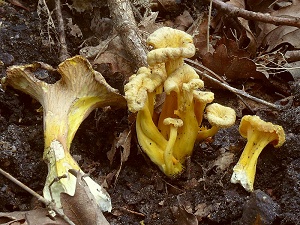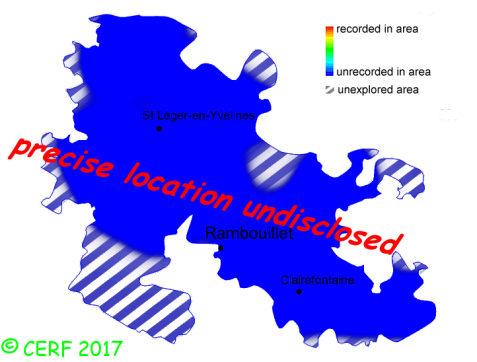| Craterellus melanoxeros (Desm.) Pérez-De-Gregorio |
|
|
|
|
|
|
The cap is pallid yellow to dull yellow or lemon yellow, convex at first then funnel-shaped, lobed and thin; its margin is very wavy and inrolled before opening up, turning eventually to blackish. The cap surface is smooth to finely downy, dry. The stem is yellow to lilac-pink, then blackening like the cap, short, full then later hollow, cylindrical, without ring. The flesh is whitish, thin and brittle, with a violet tinge in the stem, turning black when exposed to air; its taste is mild; the odour is faint; its texture is fibrous. The gills are yellow to grey with shades of pink or lilac, but these are not gills, but well formed folds or ridges, interveined, not very decurrent, distant . The spore print is white. This species is mycorrhizal. It grows on the ground, in broad-leaved or mixed woods, on a rather clayey soil. The fruiting period takes place from July to November.
Chemical tests : flesh becoming greyish then blackish when in contact with phenol. Distinctive features : Dull yellow cap, blackening from the margin, funnel-shaped; fertile surface under cap composed of well formed grey-lilac folds and not gills, connected by smaller veins; yellowish stem; in deciduous or mixed woods Craterellus melanoxeros is rare and localised in the forest of Rambouillet, and is quite rare, more generally speaking . | ||
|
page updated on 14/01/18

